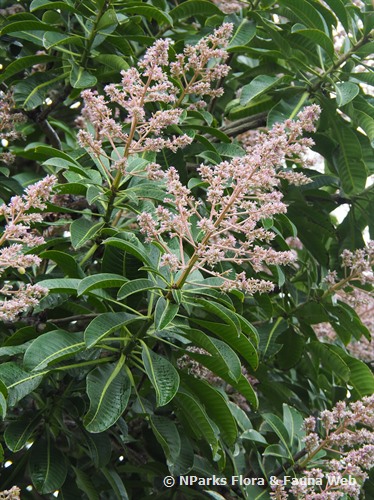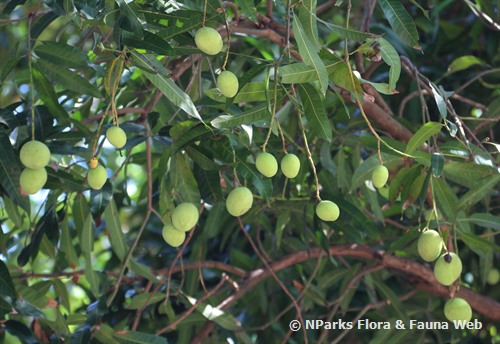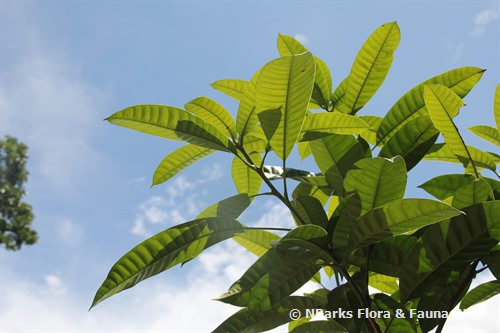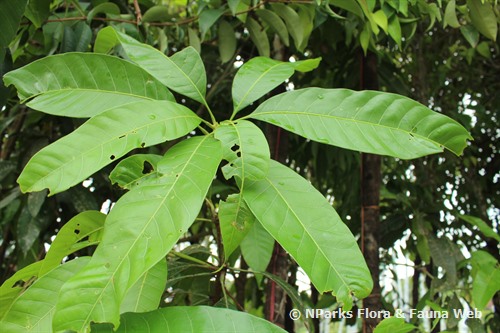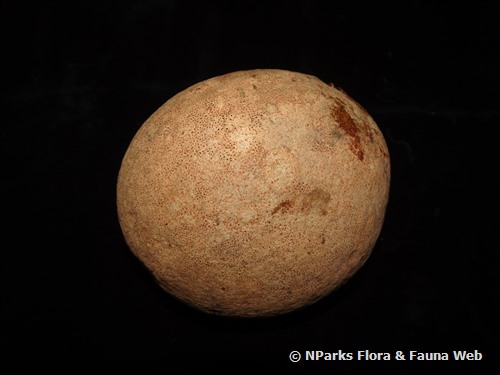
Name
Classifications and Characteristics
| Plant Division | Angiosperms (Flowering Seed Plants) |
|---|---|
| Plant Growth Form | Tree |
| Maximum Height | 33 m |
Biogeography
| Native Distribution | Borneo |
|---|---|
| Native Habitat | Terrestrial |
| Preferred Climate Zone | Tropical |
Description and Ethnobotany
| Growth Form | Mangifera pajang is a medium to tall tree, up to 33 m high, and trunk up to 70 cm diameter. |
|---|---|
| Foliage | Leaves thickly leathery and oblong shaped (28 – 45 cm long and 10 - 15 cm wide). Petiole is 5 – 7 cm long. |
| Flowers | Inflorescence is pyramidal, upright (up to 30 cm long) and densely flowered. Flower is fragrant, and comprises of 5 petals which are purple on the inner surface, pinkish white outside and contains 5 stamens. |
| Fruit | Fruits are round and the largest known in the genus (9.5 – 12 cm long and 6.5 – 10 cm wide). It has rough brown skin and yellow flesh, where the pulp is said to taste like banana. Fruit is strong smelling, but less offensive than Mangifera foetida. |
| Similar | Mangifera pajang is similar to Mangifera foetida, but differ by having longer leaves, prominent nerves, larger brown fruits and purple inner petals instead of pink. |
| Cultivation | Fruits may be damaged by Mango weevil, Cryptorrhynchus mangiferae. |
| Etymology | Mangi, Indian mango, vernacular name for a Mangifera species; Latin fero, to bear. |
| Ethnobotanical Uses | Edible Plant Parts : Edible Fruits Food (Fruit or Vegetable) Others: Ripe fruit is eaten raw and said to taste like banana. In Borneo and Sarawak, dried fruit skin and flushing shoots are consumed as vegetable. |
Plant Care and Propagation
| Light Preference | Full Sun |
|---|---|
| Water Preference | Moderate Water |
| Plant Growth Rate | Moderate |
Image Repository
Others
| Master ID | 33623 |
|---|---|
| Species ID | 8037 |
| Flora Disclaimer | The information in this website has been compiled from reliable sources, such as reference works on medicinal plants. It is not a substitute for medical advice or treatment and NParks does not purport to provide any medical advice. Readers should always consult his/her physician before using or consuming a plant for medicinal purposes. |

